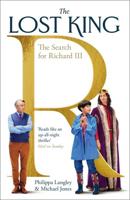Publisher's Synopsis
'Artistic Practices and Archaeological Research' aims to expand the field of archaeological research with an anthropological understanding of practices which include artistic methods. The project has come about through a collaborative venture between Dragos Gheorghiu (archaeologist and professional visual artist) and Theodor Barth (anthropologist). This anthology contains articles from professional archaeologists, artists and designers. The contributions cover a scale ranging from theoretical reflections on pre-existing archaeological finds/documentation, to reflective field-practices where acts of 'making' are used to interface with the site. These acts feature a manufacturing range from ceramics, painting, drawing, type-setting and augmented reality (AR). The scope of the anthology - as a book or edited whole - has accordingly been to determine a comparative approach resulting in an identifiable set of common concerns. Accordingly, the book proceeds from a comparative approach to research ontologies, extending the experimental ventures of the contributors, to the hatching of artistic propositions that demonstrably overlap with academic research traditions, of epistemic claims in the making. This comparative approach relies on the notion of transposition: that is an idea of the makeshift relocation of methodological issues - research ontologies at the brink of epistemic claims - and accumulates depth from one article to the next as the reader makes her way through the volume. However, instead of proposing a set method, the book offers a lighter touch in highlighting the role of operators between research and writing, rather entailing a duplication of practice, in moving from artistic ideas to epistemic claims. This, in the lingo of artistic research, is known as exposition. Emphasising the construct of the 'learning theatre' the volume provides a support structure for the contributions to book-project, in the tradition of viewing from natural history. The contributions are hands-on and concrete, while building an agenda for a broader contemporary archaeological discussion.









